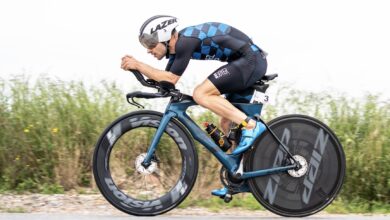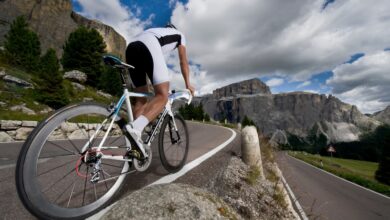The truth about hyponatremia
Hyponatremia causes a cascade of serious neurological responses that are increasing: weakness, confusion, dizziness, vomiting, seizures, coma ... culminating in very acute cases in death.
Our collaborator Miguel Ángel Rabanal clarifies several questions about hyponatremia
WHAT DOES IT CONSIST OF?
Hyponatremia is a disorder in the balance of body fluids and electrolytes that consists of an exceptionally low amount of sodium in plasma, which produces an alteration in the osmotic balance very harmful to the body especially at the brain level, since there is an inflammation of the brain (it "swells" with water), which causes a cascade of serious neurological responses that increase: weakness, confusion, dizziness, vomiting, convulsions, coma ... culminating in very acute cases in the death.
WHAT TRIATHLETS ARE AT RISK?
- Those who drink too much before and during exercise.
- Those who compete in hot and humid climates.
- Those that excrete sweat with high levels of sodium and other minerals.
- Small triathletes who sweat a lot, because in a small body less fluid is required to dilute the extracellular fluid.
- The slower and lower level because they have more time and more opportunities to drink excessively.
HOW IS IT PRODUCED?
During competitions or heat training, the production of urine decreases due to a decrease in renal blood flow, which results in a decrease in the rate of urine production. At the same time, the kidneys are reabsorbing both sodium and water in response to the sympathetic nerve stimulus and the aldosterone increase induced by exercise. As a result, there is a reduced ability to excrete water.
Under these circumstances, the excessive consumption of liquid will inevitably reduce the concentration of plasma sodium, producing hyponatremia.
In the simplest terms, hyponatremia results from combining abnormal water retention and abnormal sodium loss.
IS IT POSSIBLE TO HAVE HIPONATREMIA IN A REST?
The ability of the kidneys to process excess fluid can also be overcome at rest. With any fluid consumption that exceeds the maximum rate of urine production, plasma sodium will inevitably fall.
However, exceptionally large volumes of water must be ingested to cause hyponatremia, which is a risk for those individuals who mistakenly assume that the days leading up to competition require an excessive consumption of fluid and that it is not dangerous.
DOES METABOLIC WATER PRODUCTION DURING THE EXERCISE INCREASE THE RISK OF HYPONATREMIA?
During the exercise, when the fats are combusted and the muscle glycogen is depleted, a resulting byproduct is generated that is water, and that is usually approximately 10% of the losses, so if we have lost 1 liter of water through sweat in One hour of effort, we will have generated around 100 ml of endogenous water.
There are authors who have suspected that this water generated endogenously contribute to hyponatremia but although it is a quantity of water to be taken into account, it hardly contributes to hyponatremia.
IS IT LESS LIKELY FOR TRAINED PEOPLE?
Triathletes who have trained properly and been well acclimated to exercise in hot environments for at least a few days, usually excrete sweat with lower concentrations of sodium, because the ability of the sweat glands to conserve sodium is increased by acclimatization to hot. This decrease in sodium losses not only helps protect blood volume, but also reduces the risk of hyponatremia.
HOW TO AVOID THE HYPONATREMIA?
You must drink a quantity of liquid according to your personal circumstances: degree of training, level of sweating, degree of acclimatization, weight ...
Try that the consumption of water never exceeds the loss by sweating, since being overhydrated does not mean having more performance.
Do not forget to drink drinks or foods that contain sodium.
Miguel A. Rabanal
There are no previous results.




























